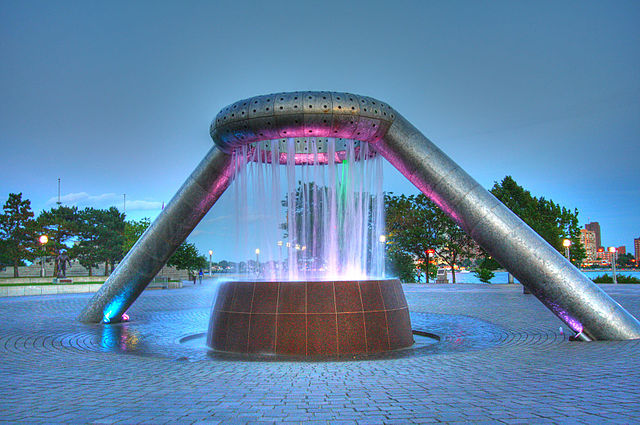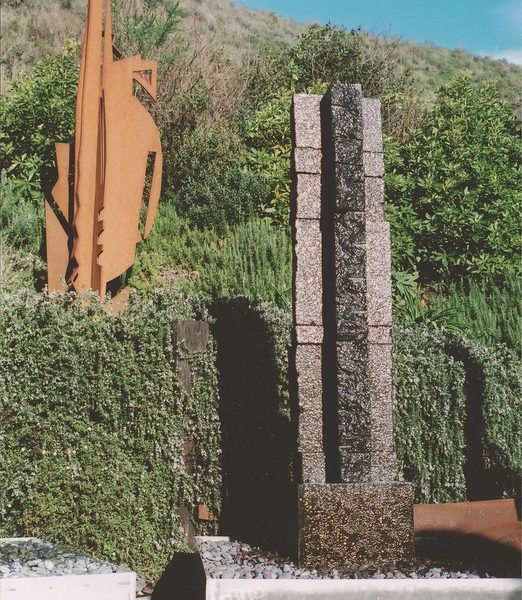Isamu Noguchi
I had a friend many years ago who tried in vain to persuade me to visit Detroit. She'd grown up there, and despite the city's many problems, she still harbored the born-and-raised view that her home town had so many virtues that simply seeing the place would be enough to win me over.
I never made the expansive sightseeing trip she'd always urged me to take - no time for that! But as it turned out, I did manage a short visit not long ago when my flight back from Canada and through Detroit was late enough that I missed my connection to Los Angeles. Making matters worse, it was a weather-related problem and I was far from alone in needing to find both accommodations for the night and another way home.
Long story short, I stayed the night in a downtown hotel, and the earliest flight I could book the next day was late in the afternoon. I'd wanted to see Isamu Noguchi's famous Horace E. Dodge & Son Memorial Fountain for a long time, and this was my opportunity: I had breakfast and ventured forth.
Nothing worked out on that gray, miserable January day: The weather was horrid, the hotel wasn't convenient to the riverfront plaza where the fountain stands so imposingly, and, topping things off, the whole plaza had been rendered inactive by vandals who had raided its maintenance facilities to scrounge the copper plumbing. So the fountain was as dry as a wet, near-freezing day would let it be and my whole accidental visit was a colossal bust.
As a sculpture, however, Noguchi's 1978 tribute to the industrial prowess embodied by one of auto manufacturing's leading families is vastly impressive. It's sometimes said that it looks like a gigantic wingnut, but the comparison is unkind and serves, unfairly I think, to undermine the composition's dignity, grandeur and symbolic strength. And it does stand 30 feet tall, with its fountain basin surrounded by an eight-foot-tall, granite-ringed structure that conceals the nozzles and lends an air of mystery to the fountain works.
Apparently there's also a choreographed light display that animates the fountain's surface after dark - again, not something I saw on my visit but which looks awesome in photographs (and in the brief video linked here).
All is not sad or lost: I was happy to learn in rounding up images to accompany this text that the fountain is operational again and has had its lighting system upgraded with modern LED and sequencing technology. But I have still only seen the functioning plaza and its various features in photographs: What I recall most is a chill wind so penetrating and miserable that I wondered why I'd ever left the airport.
Better luck next time?
Creating granite waterfeatures is not unlike the delicacy of deep-water yacht racing: Racing big boats across the open sea requires intuitive sense in harnessing the raw powers of nature, much as do the creative insights needed to take raw monoliths from quarry walls and produce elegant expressions that reflect our primal essence. Both endeavors must gracefully balance the unbridled forces of nature. In yacht racing, wind and waves must be brought into harmony with a yacht's unique rigging and sails by its skipper and crew. With granite waterfeatures, an innate sense of harmonic balance must be struck between granite and/or water, the landscape and the human observer's ability to appreciate solemnity. In my case, these harmonies have consistently been found in asymmetry. Indeed, I've come to feel confident with the premise that people are, knowingly or not, drawn to the asymmetrical balances they see in nature. I also see both art and architecture as skillful reflections and expressions of what we have observed in nature from time immemorial. To that end, I try to create works that draw their form and spirit from the intuitive balance of asymmetry. Whether sculpting a landscape, setting stones in a rock garden or















